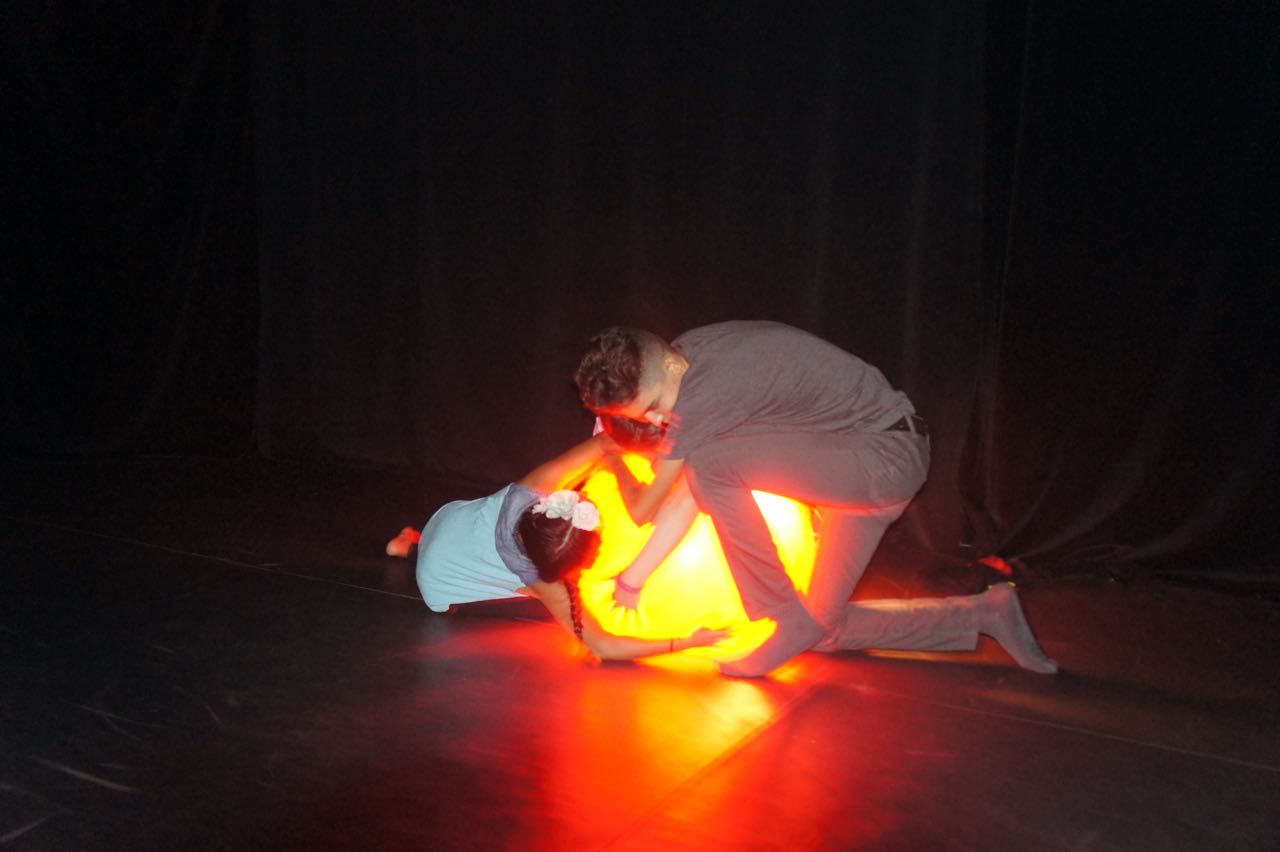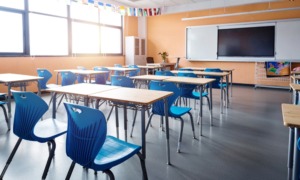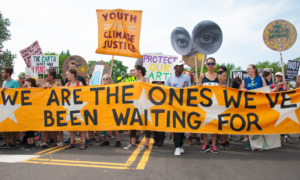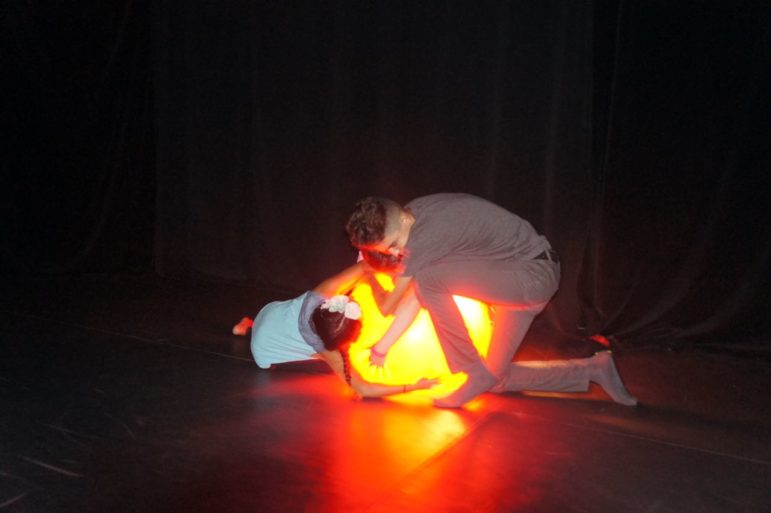
Stell Simonton
Aylin Payen and Elijah Chavez create a dramatic moment for “The Education Project,” a performance developed by students and adults, including Scott Barrow of Tectonic Theater Project in New York and Milta Ortiz from Borderlands Theater in Tucson, Arizona. Working Classroom Theater Education Director Meggan Gomez conceived the project.
Darkness is thick in the black box theater. Suddenly air rushes in — quick whooshes like the sound of panicked breathing. Then a small piercing light and a blast of noise.
Then three kids are on the stage floor, their arms around a large ball, as if holding on for dear life.
It’s a “stage moment” designed to express anxiety.
The teenagers developed it as part of a larger performance they’re creating on the theme of inequity in education.
“The Education Project” is the creation of Working Classroom, a youth development nonprofit in Albuquerque, New Mexico. The after-school arts and education program serves middle and high school students from historically ignored communities in Albuquerque. Ninety-eight percent of its 175 students are from low-income families, said Executive Director Gabrielle Uballez, and the theater program is bilingual.
“It’s sometimes difficult to convey our twofold vision,” she said.
Working Classroom’s goal is for its students to become agents of change through creative expression. The arts help us all “interpret where we are headed,” Uballez said.
Kids start with introductory workshops in visual arts, theater and digital media, and then move to in-depth arts training with guest artists. Workshops are offered after school and during the summer at Working Classroom’s location in the Barelas neighborhood, a historically Hispanic area of Albuquerque. Workshops cost $25 and introductory ones are generally 30 hours or about six weeks. Working Classroom offers mentoring, academic help, internships and the opportunity to work on collaborative projects. Students can get summer jobs and free access to city cultural events.
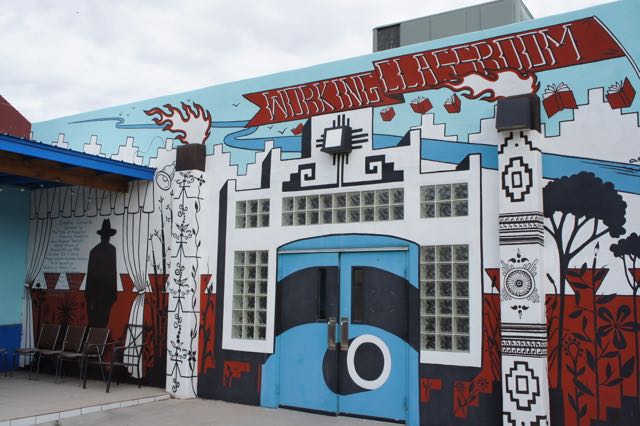
Stell Simonton
Students can get in-depth arts training as well as academic assistance and mentoring at the out-of-school program Working Classroom in Albuquerque, New Mexico. They go on to post-secondary education ranging from community colleges to the nation’s top art schools.
The organization wants to change the landscape of who works in the creative arts. People of color and those with low incomes are not usually on the boards of arts organizations, she said.
“As long as some communities are invisible or underrepresented, the reflection is distorted and the conversation incomplete,” Uballez said.
From student to leader
Uballez, a Latina, was a student herself at Working Classroom from 1997 to 2004, from sixth grade through high school. Among many projects, she took part in the creation of a comic book about predatory lending, commissioned by the New Mexico Mortgage and Finance Authority.
One of the plays Working Classroom produced in the 1990s was “Bocon!,” a bilingual fable about a boy who fled El Salvador.
“We brought it back last year and the year before,” Uballez said, when an upsurge of kids were traveling from Central America to the Southwest border of the United States.
“All the work we do addresses really tough issues but chooses to assert a sense of hope,” she said. The play has a sweet “Wizard of Oz” feel, she said.
Nan Elsasser, an English professor and playwright, founded Working Classroom after traveling in 1987 to war-torn Nicaragua, where some schools had no books, pencils or paper. She returned and began working with middle-school kids in Albuquerque who were immigrants themselves.
During the course of three years, the group of kids created 32 original books for primary schools in Bluefields, Nicaragua. In the process, they studied the culture, geography and botany of Central America, and they improved their own reading and writing skills, according to Working Classroom.
Their work was so useful the young people were invited to present it to psychologists at George Washington University as a model for teaching young Salvadoran refugees, according to Working Classroom’s website.
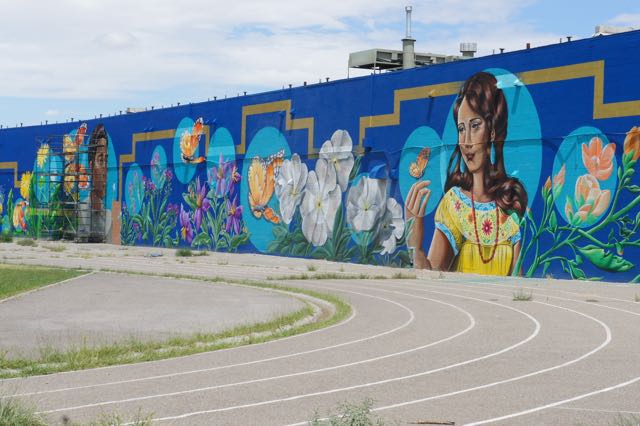
Stell Simonton
This mural at Washington Middle School in Albuquerque, New Mexico, was created by students and artist Nani Chacon.
Youth develop their vision
Kids at Working Classroom first are encouraged to figure out what they have to say and then how to express that through art, Uballez said.
Research is an important part of students figuring out what they have to say, Uballez said. “They have to inform themselves,” she said.
Art schools often start with technique, Uballez said. At Working Classroom, students and guest artists start with an idea and then pursue the technique needed to express it.
Uballez said this approach teaches young people how to live up to their full potential to express ideas. Artists have to have vision, she said. It’s not just about technique.
“Everyone has to have something to say,” she said.
In the black box theater, four students — Elijah Chavez, Michelle Perez, Aylin Payen and Jorja Brickhouse — are working with guest artist Scott Barrow of the Tectonic Theater Project in New York City.
Three of the teens are paid interns who have interviewed about 50 students, parents, teachers and policymakers about their schooling for the Education Project.
“We said: ‘Tell me about your experience in education,’” Brickhouse said. “We also asked about standardized testing.”
One experience they heard about was anxiety. With Chavez directing, the group worked on ways to represent anxiety visually, using the Moment Work technique that Barrow teaches.
The students also went to lectures about this method of creating moments of impact, using such things as light, sound and body movement.
Students are also working to develop a script with playwright Milta Ortiz of Borderlands Theater in Tucson, Arizona.
The project was conceived by Working Classroom Theater Education Director Meggan Gomez. The performance will premier in February.
Working Classroom emphasizes a collaborative process rather than a teacher-as-authority approach.
‘We are learning together,” Uballez said. “That’s what’s unique about our pedagogical approach.”
Community and creation
The name “Working Classroom” holds several ideas. One idea is that it offers a classroom that works, meaning that it functions well using a collaborative approach, Uballez said. A second idea is that students are creating work that is useful for others, such as the books for Nicaraguan children. And finally, the efforts of students and teachers serve the working class, she said.
On an outside wall at Washington Middle School in Albuquerque, a mural stretches. At 600 square feet, it’s one of the largest murals in the city. This summer, students from Working Classroom have been painting it with artist Nanibah “Nani” Chacon, whose work often explores the experience of displaced people. Winding through the mural are many indigenous plants of New Mexico now considered weeds, Uballez said.
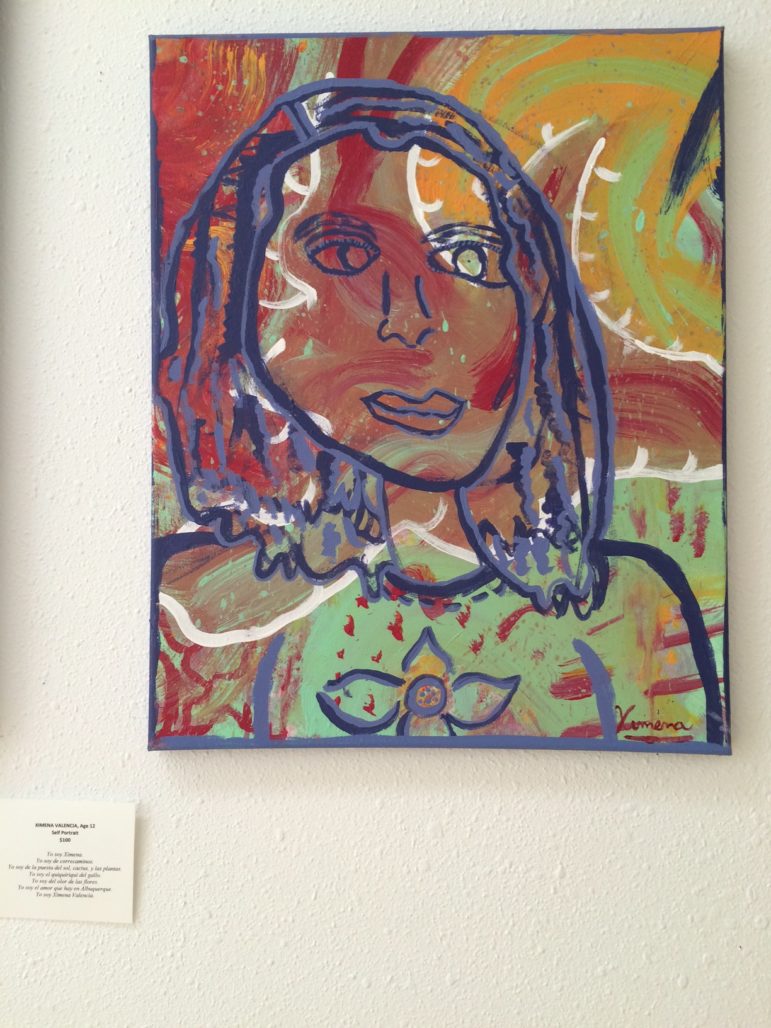
Stell Simonton
A student’s self-portrait displayed at Working Classroom.
This plants at the bottom of the mural look as if they’re growing up from the concrete at the base of the wall — pushing through cracks, perhaps like groups of people who have been ignored and displaced.
Uballez recalls her experience as student: “Working Classroom challenged me in a way I’d never been challenged before,” she said.
In addition to its intellectual challenge, she said she found Working Classroom offered a space where “taboo” subjects could be addressed — race, gender, sexuality, immigration.
That’s really important when you’re a teenager, she said.
The organization gave her “the ability to question the world around me,” she said.
“Art is about asking questions.”


